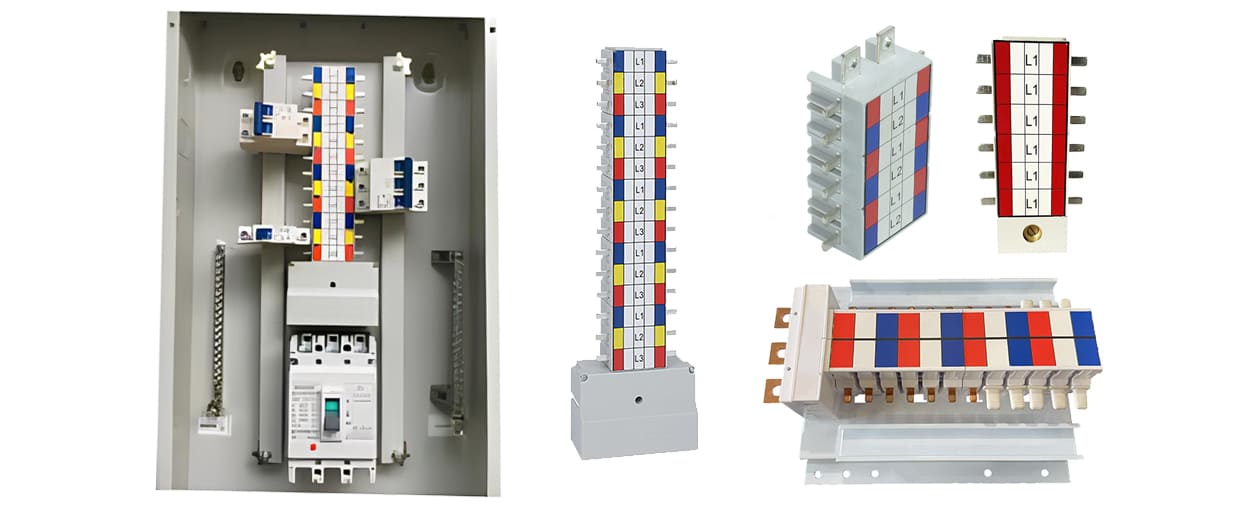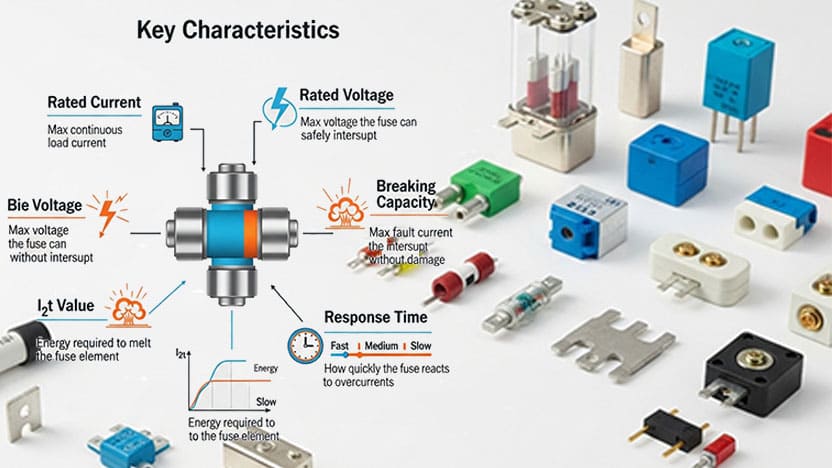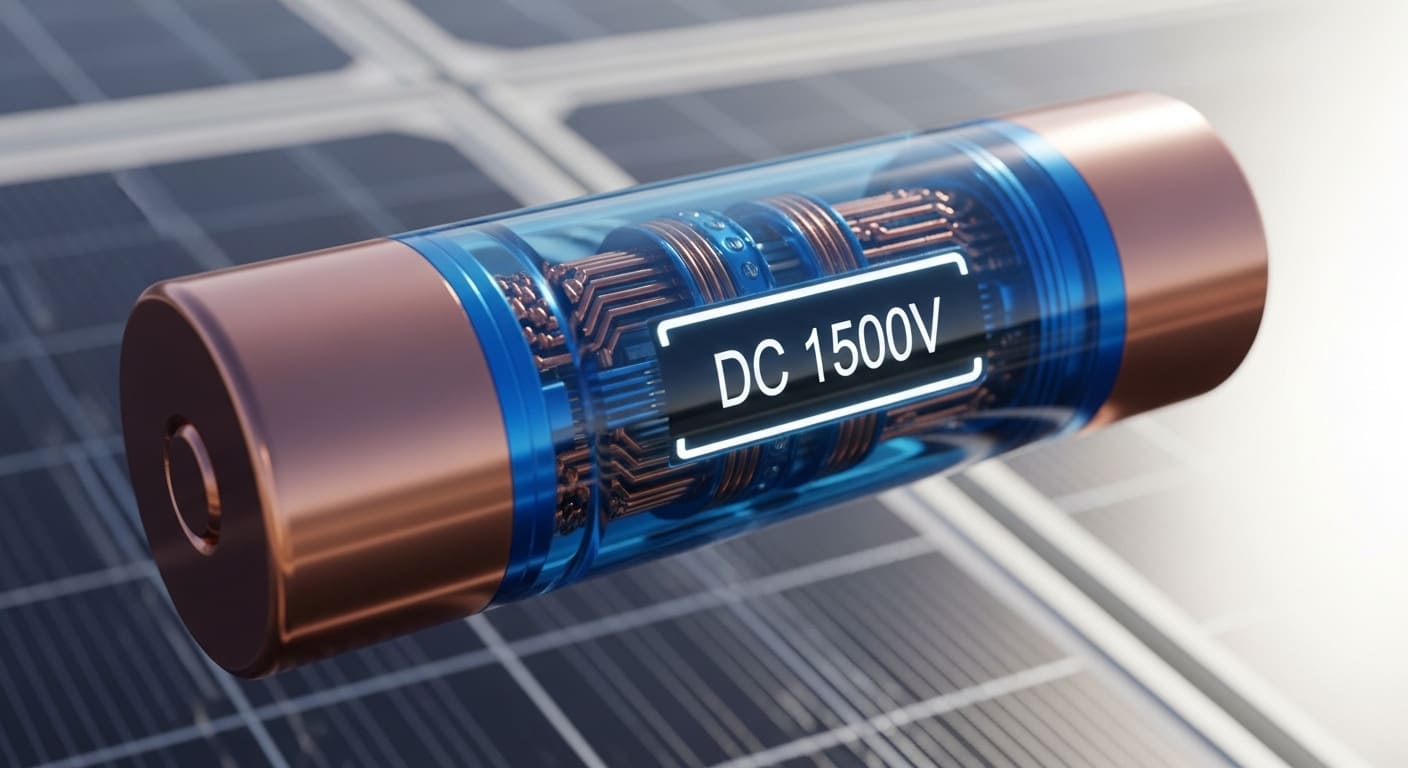Solar installations face unique electrical hazards that standard protection devices can't handle. DC current continues flowing even during faults, creating dangerous arc flashes and fire risks if improper protection is installed.
A photovoltaic fuse1 is a specialized overcurrent protection device2 designed specifically for DC solar applications, capable of safely interrupting high DC voltages (up to 1500V), withstanding reverse current flow during faults, and operating reliably under extreme temperature fluctuations typical in solar installations.
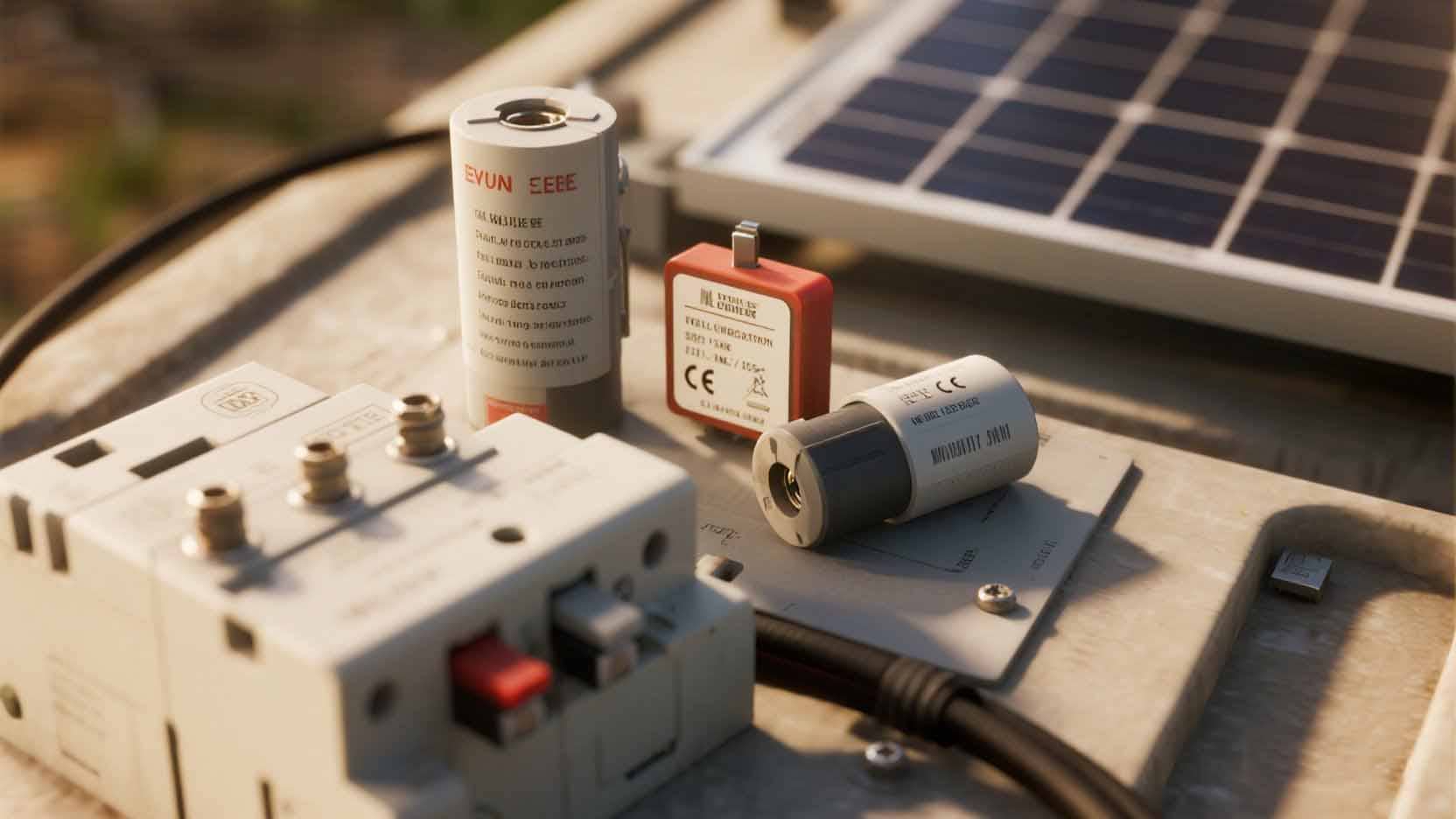
I've worked with numerous solar installers who initially underestimated the importance of proper DC fuse selection. The consequences can be severe - from premature system failures to catastrophic fires. Let me walk you through everything you need to know about these crucial safety components.
What is a Photovoltaic Fuse and How Does it Protect Your Solar System?
Regular electrical fuses often fail prematurely or cannot safely interrupt DC faults in solar systems. When standard fuses are used, dangerous arcs can persist, creating serious fire hazards.
A photovoltaic fuse is a safety device specifically engineered for solar applications that interrupts current flow during fault conditions in DC circuits. These fuses feature specialized arc quenching capabilities3, higher voltage ratings (up to 1500VDC), and are designed to withstand the unique thermal cycling and environmental conditions of solar installations.
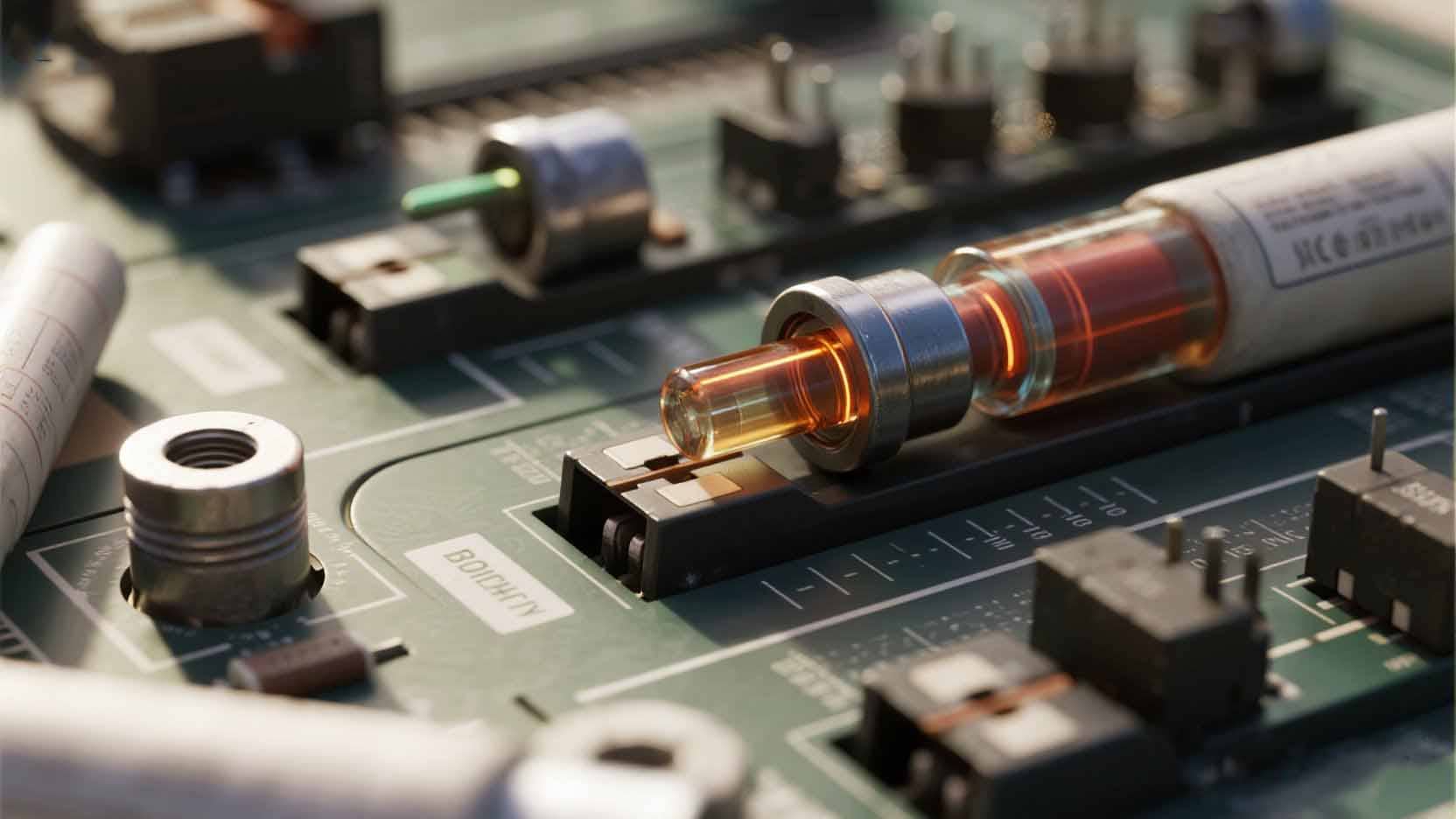
In my years working with solar installations, I've seen firsthand how photovoltaic fuses differ from standard fuses in critical ways. These specialized components are essential safeguards in solar power systems, where the electrical characteristics create unique protection challenges.
PV fuses incorporate several distinctive design elements that make them suitable for solar applications. The internal structure typically features enhanced arc quenching capabilities through special chambers and filling materials that can safely extinguish the persistent arcs that occur in DC circuits. Unlike AC circuits where current naturally crosses zero 50-60 times per second (helping extinguish arcs), DC current flows continuously, making arc extinction much more challenging.
Key Characteristics of Photovoltaic Fuses
| Feature | Description | Benefit in PV Systems |
|---|---|---|
| gPV Classification | Specifically tested and rated for photovoltaic applications | Ensures reliable performance in solar-specific conditions |
| High DC Voltage Rating | Typically rated for 1000VDC or 1500VDC | Accommodates high string voltages in modern solar arrays |
| Temperature Compensation | Designed for wide ambient temperature ranges (-40°C to +85°C) | Maintains protection consistency despite weather fluctuations |
| Cyclic Loading Capability | Can handle daily solar power production cycles | Prevents premature aging from thermal cycling |
| Special Filling Materials | Quartz sand and other specialized mediums | Enhances arc extinction capabilities for DC circuits |
| Low Power Dissipation | Minimizes heat generation during normal operation | Reduces energy losses in the system |
Another critical aspect of PV fuses is their ability to handle the unique current profile of solar systems. Solar arrays experience daily cycling as the sun rises and sets, creating thermal stress that can cause standard fuses to fatigue prematurely. PV fuses are designed with these cycles in mind, offering much longer operational life under these demanding conditions.
I've also found that quality PV fuses feature time-current characteristics4 specifically calibrated for solar applications. They're designed to ignore brief overcurrents caused by irradiance fluctuations (like passing clouds) while still responding quickly to genuine fault conditions. This balance is crucial for system reliability and safety.
What Does a DC Fuse Do in Solar Applications?
Standard overcurrent devices often fail to interrupt DC faults effectively, leading to persistent arcs and equipment fires. Without proper DC fuse5 protection, solar arrays become dangerous fire hazards during fault conditions.
A DC fuse in solar applications provides critical overcurrent and short circuit protection6 by safely interrupting current flow when faults occur. Unlike AC fuses, DC fuses are specially designed to extinguish the persistent arcs unique to direct current, preventing catastrophic failures and fires in solar power systems.
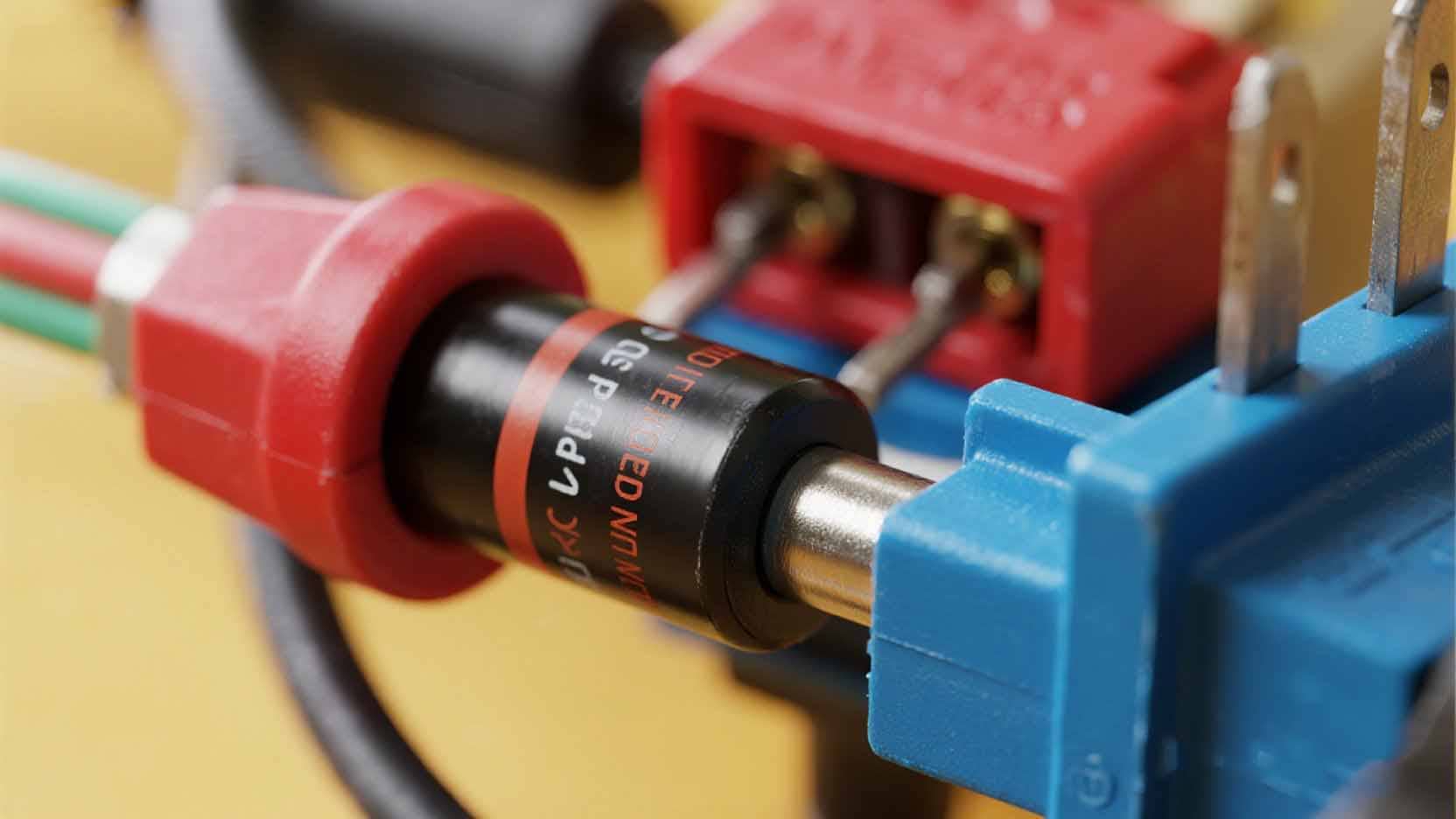
DC fuses perform several essential functions in photovoltaic systems that are fundamentally different from their AC counterparts. When I conduct system assessments for clients, I emphasize that understanding these differences is crucial for proper system protection.
The primary function of a DC fuse is to safely interrupt the circuit when current exceeds the fuse's rated value. This sounds simple, but with DC current, interruption becomes complex. When a DC fuse begins to open during a fault, an arc forms between the separating fuse elements. This arc is particularly persistent in DC systems since there's no natural zero-crossing to help extinguish it. DC fuses contain specialized arc-quenching materials and designs that absorb the arc energy and rapidly cool and extinguish the arc to safely break the circuit.
DC Fuse Functions in PV Systems
| Function | How It Works | System Benefit |
|---|---|---|
| Overcurrent Protection | Melts when current exceeds rated value for a specified time | Prevents wire insulation damage and potential fires |
| Short Circuit Protection | Rapidly interrupts high-current faults | Limits damage to expensive components |
| Reverse Current Prevention | Interrupts backfed current during string faults | Prevents modules from feeding current into faulted strings |
| System Isolation | Provides means for safely disconnecting DC circuits | Enables safe maintenance and troubleshooting |
| Equipment Protection | Limits fault energy to levels below equipment ratings | Extends life of inverters, combiner boxes, and switches |
I've analyzed numerous system failures where improper DC fuse selection led to catastrophic results. One particular issue I frequently encounter is undersized fuses that experience nuisance tripping during normal operation, especially during cold morning starts when PV modules can briefly produce higher currents. Conversely, oversized fuses might fail to protect against actual fault conditions.
Another critical consideration is voltage rating7. DC fuses must be rated for the maximum system voltage, which in modern solar installations can reach 1000V or 1500V. Using a fuse with inadequate voltage rating can result in the fuse failing to safely clear a fault, potentially causing the fuse to rupture violently or fail to interrupt the current flow.
When I work with installers, I emphasize that proper DC fuse placement within the system is just as important as fuse selection. Typically, DC fuses are installed in multiple locations: on individual strings to protect against reverse current, at combiner boxes to protect feeder conductors, and sometimes at the inverter input to provide final circuit protection.
What is the Purpose of a DC Fuse Used in an Inverter?
Inverter manufacturers report that many warranty claims stem from inadequate DC-side protection. Without proper DC fusing, expensive inverters remain vulnerable to damaging current surges from the PV array.
A DC fuse8 in an inverter protects the equipment from excessive current flowing from the solar array that could damage sensitive internal components. It serves as the final defense against overcurrents, short circuits, and ground faults before DC power enters the inverter's conversion circuits, preventing costly inverter damage and potential fire hazards.
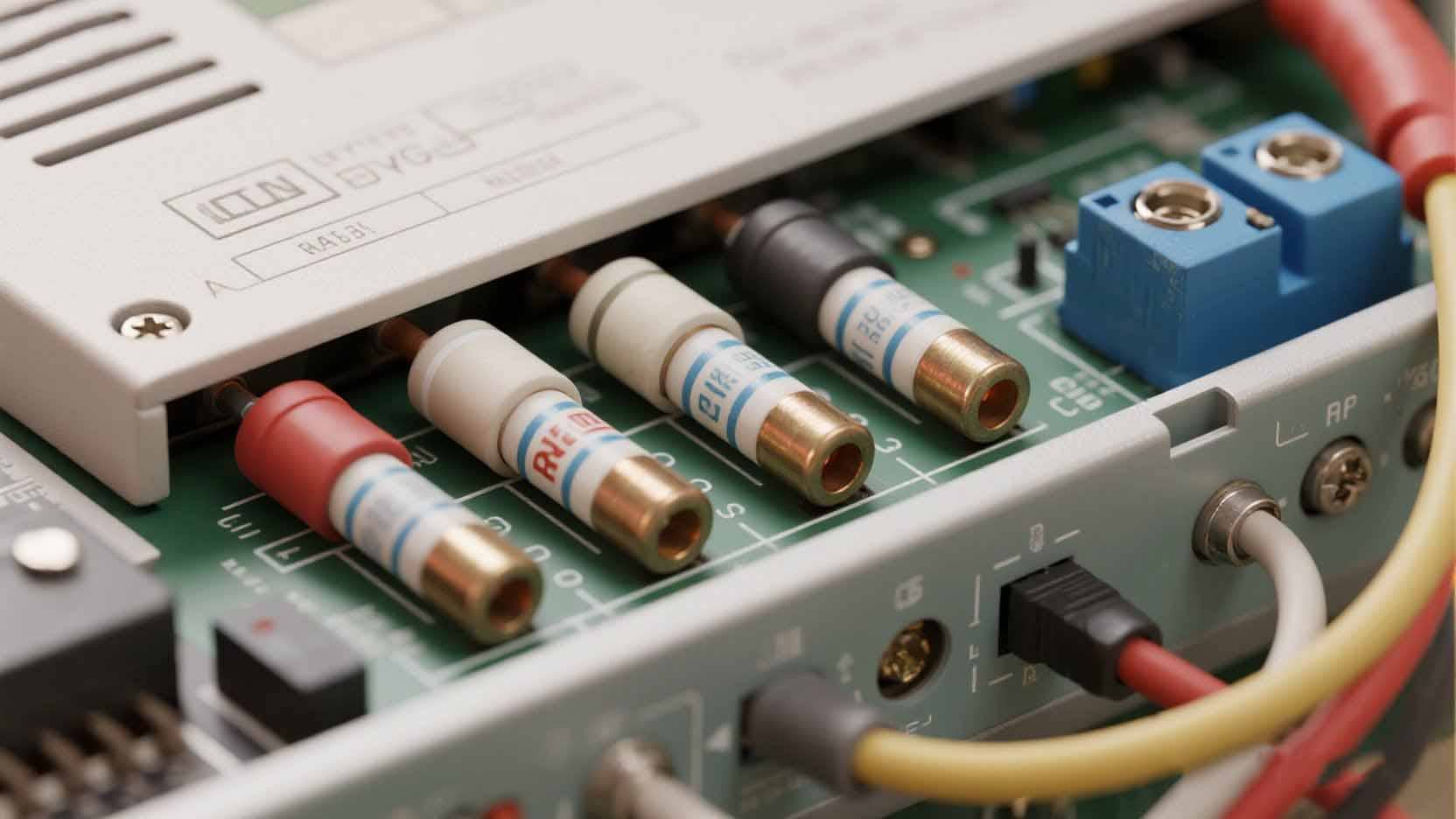
Through my work with solar installers and system integrators, I've gained valuable insights into the critical role DC fuses play specifically at the inverter stage. This protection point requires particular attention as it guards one of the most expensive components in the entire solar system.
Inverters represent the heart of solar power systems, converting DC electricity from solar panels into usable AC power. These sophisticated electronic devices contain sensitive semiconductors, capacitors, and control circuits that can be permanently damaged by even brief overcurrent events9. The DC fuse at the inverter input provides dedicated protection for these components.
Multiple Protection Layers of DC Fuses in Inverters
| Protection Aspect | How It Functions | Practical Benefit |
|---|---|---|
| Input Overcurrent Protection | Prevents excessive current from reaching inverter circuits | Protects power transistors and bus capacitors from thermal damage |
| Ground Fault Protection | Works with ground fault detection systems to interrupt circuits during insulation failures | Prevents shock hazards and equipment damage |
| Back-feed Protection | Prevents current flow from batteries/grid back to damaged PV arrays (in hybrid systems) | Isolates array faults from backup power sources |
| Arc Flash Mitigation | Quickly interrupts current during arc flash events | Reduces energy in potential arc flash incidents, enhancing worker safety |
| Coordinated Protection | Works with other system protection devices in a coordinated scheme | Ensures only affected portions of the system are isolated during faults |
In string inverter applications, I've observed that the inverter DC fuses are typically the last line of defense in a coordinated protection scheme. They're sized to protect the inverter itself while allowing the upstream fuses (at the combiner box or string level) to clear faults in their respective zones first. This selective coordination minimizes system downtime by isolating only the affected portion of the array.
For central inverters used in larger commercial or utility-scale installations, the DC fuses often need to handle much higher currents and must be carefully coordinated with the inverter's internal protection features. These fuses typically have specific time-current characteristics that complement the inverter's own protective functions while providing backup protection.
I recently worked with a commercial client whose inverter repeatedly shut down due to internal fault detection. After investigation, we discovered that the DC fuses were slightly oversized, allowing damaging current spikes to reach the inverter's input circuits before clearing. While the inverter's internal protection prevented catastrophic damage, these events caused unnecessary downtime and stress on components. Replacing these with properly sized DC fuses resolved the issue completely.
What Size Fuse for 12V DC Systems?
Improper fuse sizing10 leads to either nuisance tripping11 that disrupts power generation or inadequate protection that endangers equipment. Many installers use rules of thumb instead of proper calculations, creating safety gaps.
For 12V DC systems11, fuse size should be 125% of the maximum continuous current the circuit will carry. For example, a circuit carrying 20A continuously would require at least a 25A rated fuse. The fuse must also have a voltage rating that meets or exceeds the maximum system voltage, accounting for temperature and open-circuit conditions.
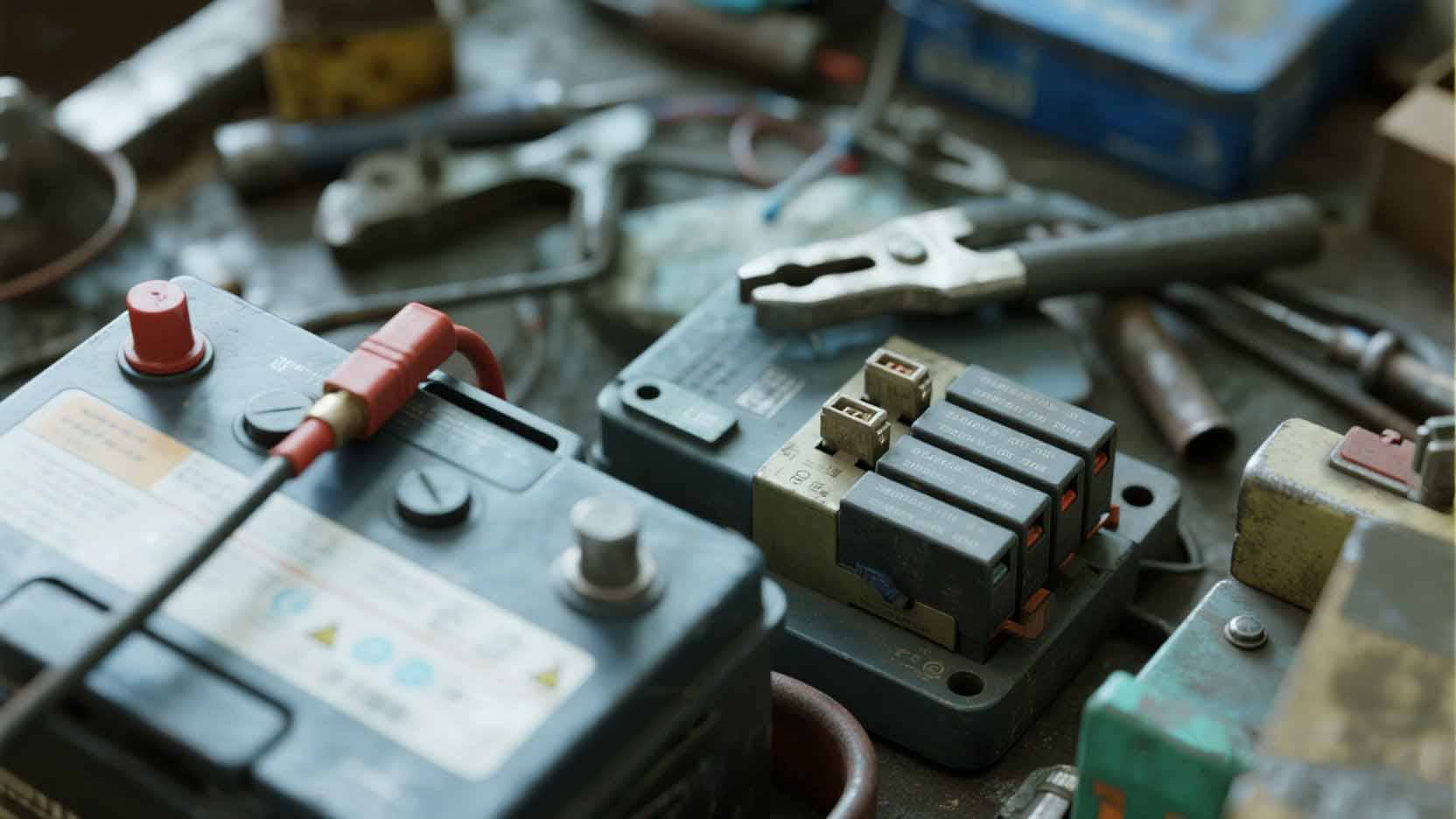
Selecting the correct fuse size for 12V DC systems involves several key considerations beyond simply matching the current rating. Through my experience in designing protection schemes for various solar installations, I've developed a systematic approach to fuse sizing12 that ensures both safety and reliability.
While 12V systems are less common in modern grid-tied solar installations (which typically operate at much higher voltages), they remain popular in off-grid applications, RV solar systems, and small backup power setups. The lower voltage doesn't mean protection can be taken less seriously; in fact, 12V systems often carry higher currents to deliver equivalent power, making proper fuse sizing critical.
Fuse Sizing Process for 12V DC Systems
| Step | Calculation/Consideration | Example |
|---|---|---|
| Determine Maximum Load Current | Calculate total connected load or measure with ammeter | 16A continuous load |
| Apply NEC Multiplier | Multiply continuous load by 125% (1.25) | 16A × 1.25 = 20A minimum |
| Consider Ambient Temperature | Apply derating for high-temperature environments | In 50°C environment, may need further 15% upsize |
| Account for Startup Surge | For motor loads, account for inrush current | A pump with 3× startup surge needs time-delay fuse |
| Conductor Protection | Fuse must protect the wire gauge used | 10AWG wire (30A capacity) is protected by 25A fuse |
| Verify Voltage Rating | Ensure fuse voltage rating exceeds maximum system voltage | For 12V system that can reach 15V open circuit, use 32V fuse minimum |
I've found that one common mistake in 12V systems is failing to account for voltage spikes during charging. Even a "12V" battery system can reach 14.8V or higher during absorption charging, and solar panels connected to these systems might output 20-22V in open-circuit conditions. Therefore, I always recommend using fuses with a DC voltage rating of at least 32V for these applications.
Another critical factor often overlooked is the fuse's interrupting capacity13. In 12V systems, particularly those with batteries, available fault currents can be extremely high due to the low internal resistance of batteries. I advise clients to select fuses with adequate interrupting ratings (often 1000A or higher) to ensure they can safely clear faults without rupturing.
For specific applications like solar charge controllers14 in 12V systems, I typically recommend sizing the fuse based on the controller's maximum input current rating, then applying the 125% factor. For example, for a 30A charge controller, a 40A fuse would generally be appropriate for the PV input circuit.
The type of fuse is equally important in 12V applications. For most solar applications, I recommend Class R, Class J, or specific photovoltaic-rated fuses15 that have been tested for DC performance. In recreational vehicle or marine applications, ATC/ATO automotive-style fuses may be appropriate for smaller circuits, while ANL or Class T fuses work well for higher-current main circuits.
Conclusion
DC photovoltaic fuses are specialized protection devices essential for solar system safety, featuring high voltage ratings and arc-quenching abilities standard fuses lack. They protect inverters from damaging currents and require proper sizing (125% of continuous current) with appropriate voltage ratings. Using the correct DC fuses dramatically reduces fire risks and equipment damage in solar installations.
-
Explore this link to understand the critical role photovoltaic fuses play in ensuring solar system safety. ↩
-
Learn about overcurrent protection devices and their importance in preventing electrical hazards in solar systems. ↩
-
Discover how arc quenching capabilities enhance safety in solar applications and prevent fire risks. ↩
-
Discover how time-current characteristics help photovoltaic fuses respond effectively to fault conditions. ↩
-
Understanding DC fuses is essential for ensuring safety and efficiency in solar power systems. ↩
-
Explore the significance of short circuit protection to safeguard your solar investments. ↩
-
Learn why selecting the correct voltage rating for DC fuses is vital for safety and performance. ↩
-
Understanding the function of DC fuses can help you protect your solar inverter from damage. ↩
-
Discover how overcurrent events can damage inverters and how to prevent them. ↩
-
Proper fuse sizing is crucial for safety; explore guidelines to ensure correct sizing. ↩
-
Discover solutions to avoid nuisance tripping that disrupts solar power generation. ↩ ↩
-
Understand the unique challenges and requirements of 12V DC systems in solar. ↩
-
Learn why selecting fuses with adequate interrupting capacity is critical for safety. ↩
-
Gain insights into the role of charge controllers and their fuse requirements. ↩
-
Understand the significance of using photovoltaic-rated fuses for solar applications. ↩


